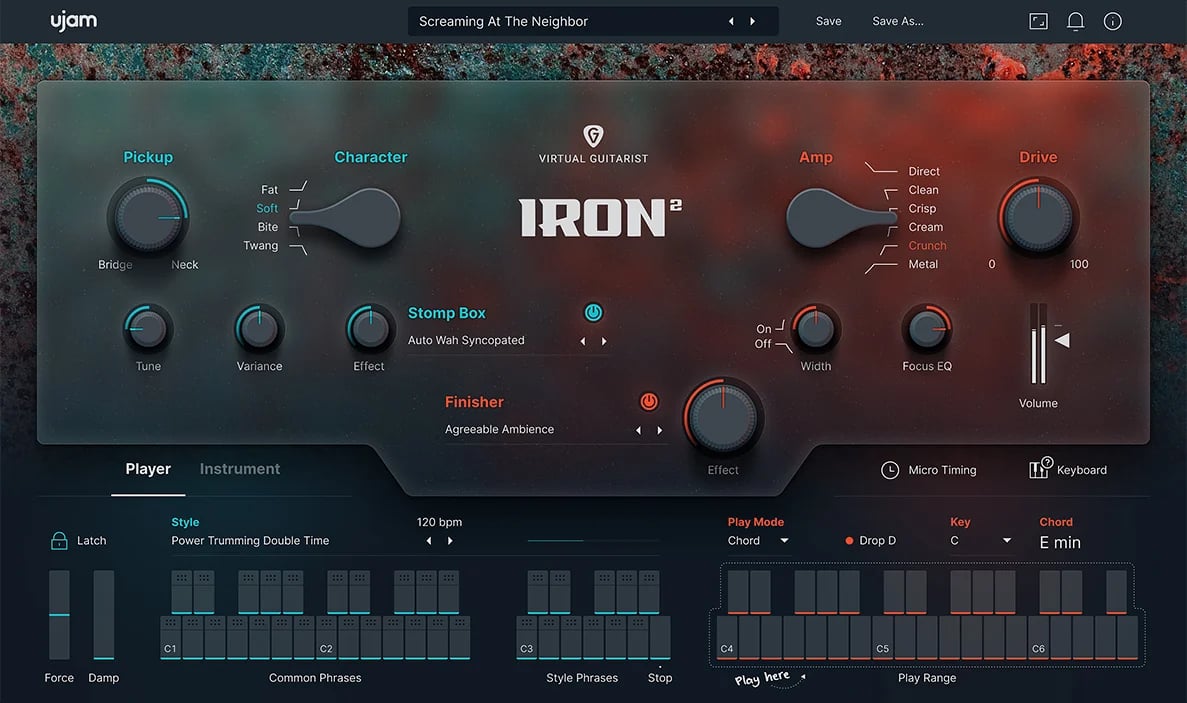

- Harmor vst windows free full#
- Harmor vst windows free pro#
- Harmor vst windows free software#
- Harmor vst windows free free#
These are the default waveforms when Harmor is opened, but they can be edited or changed by either importing any single-cycle waveform or additively editing their timbre in the envelope section below using the line editor. Starting off at the top left of the interface, two timbres, a saw and square wave, can be morphed or used independently when creating a sound. This is the reason why Image-Line calls it an additive / subtractive synthesizer. General and advanced GUI features Īlthough Harmor is internally an additive synthesizer, most of its controls found on the main GUI are presented in a way that is familiar to subtractive synthesis users. Harmor’s spectrogram (visual feedback panel) can also be revealed to show partials sent to the synthesis engine and display their behavior in real-time.
Harmor vst windows free full#
gif) files can also be resynthesized quite faithfully, and some of their parameters can be edited such as time stretching, pitch shifting, and formants, in addition to the full amplitude, pitch and phase harmonic-level manipulation enabled by the additive parameters described above. Imported audio ( WAV, AIFF, WavPack, MP3, OGG, REX1&2) and image (.bmp. Harmor can produce up to 516 partials per note, per unison voice, in each part (512 partials, 3 sub-harmonics, and the filter self-resonance oscillator). This enables a greater amount of harmonic control before partials are summed. Furthermore, lots of these additive parameters can also be individually controlled per each unison voice, and the way these additive modules affect harmonics can often be changed according to custom shapes, masks, and harmonic distribution graphs in the envelope section using line editors. This means that the timbre, filters, harmonizer, phaser, equalizer, and more are all done additively. Although the different additive modules and controls found in Harmor can look similar to more conventional synthesizers that utilize subtractive synthesis, its sound generation engine differs in that it sums its partials later in the signal chain (right before the FX stage) compared to some other additive synthesizers. Harmor is powered by an additive synthesis engine, similar to Image-Line’s synthesizer Morphine. Processor for dual-mono-stored-as-stereo audio data.Features Additive synthesis engine


Harmor vst windows free free#
Lo-Fizer is a free VST plugin that adds some lo-fi effects to your recordings. Tool for adjusting the audio delay and the reported delay to the VST host. NoiseBud MidiVU is a free VST plug-in that converts audio signal into MIDI CCs so that users can monitor audio visually via MIDI controllers that have real time Led feedback. Random, probability-based, step-sequenced multi-fx device. įree VST effect plug-in - audio to midi processor - synth.Įxtended version of TAL-Dub with a completely new sound engine. ħ-band harmonic (overtone) graphic equalizer.
Harmor vst windows free software#
VST debug software for plug-in and host developers.įree reverb plug-in that can simulate sounds in water. Tape delay plug-in with special features for live use. Smoothly transform it into a stereo flanging effect with a single slider.
Harmor vst windows free pro#
Tool for live recording and manipulation of audio loops, with features similar to those of the Gibson Echoplex Digital Pro and the Electrix Repeater. įFT-based analyzer for audio frequency content displayed as 1/3 octave bars or FFT curve. Ĭontrol the stereo field of lower frequencies in your audio material. įrequency shifter, combined with an analog-style echo. Intended to enrich your sounds by blending both dry and wet signals, the A-150 includes a dry channel as well as a tube-simulated channel with a compressor, 9-Band EQ and five-mode filter.


 0 kommentar(er)
0 kommentar(er)
